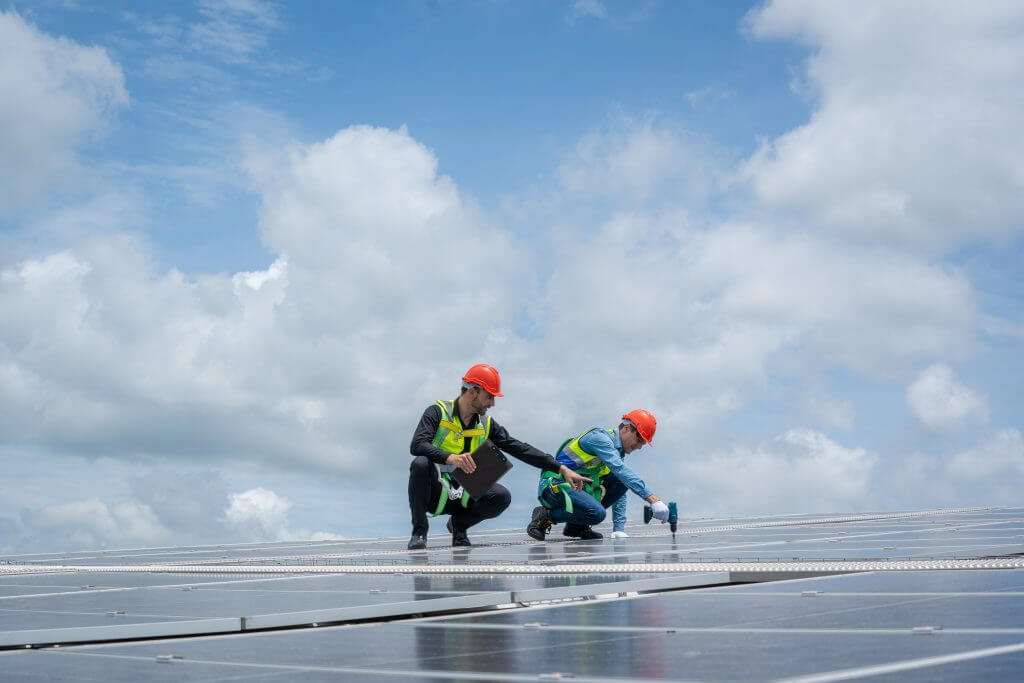October 31, 2023
What is the Inflation Reduction Act?
According to the White House, the Inflation Reduction Act, or IRA, is “the most significant action Congress has taken on clean energy and climate change in the nation’s history.” At a high level, the IRA contains strategies to reduce the costs of making both commercial and residential projects more efficient.
Given the built environment’s significant contributions to climate emissions, there is a focus on building upgrades, operational efficiency, new technology, and embodied carbon. The Act also contains various social justice initiatives, including opportunities for affordable housing, apprenticeships in underserved communities, and resilience in inner city areas.
What are some of the impacts of the IRA?
There is a lot that can be said about the 700+ page Act, and varying views on it is impacts, but a few key aspects that are particularly relevant to professionals in the design and construction industries include supply chain issues, cost reduction strategies, and embodied carbon.
Mitigating Impacts of Inflation on Supply Chains
The impacts of inflation on the building industries vary, but generally include aspects related to cost escalations, reduced client budgets, and supply chain interruptions. The IRA contains various tools to help offset some of these impacts, and ease some of the inflation-driven pressure on the industry.
The IRA’s focus on clean energy not only results in direct environmental benefits, it can also help insulate consumers from some of the price volatility of fossil fuels; this can have secondary benefits of alleviating some of the budget constraints and supply chain issues.
Reducing Costs
One way to drive adoption of efficiency improvements is to make them less expensive. The IRA does this in a variety of ways, including tax provisions, grant and loan programs, and investments in clean energy and climate work, for both commercial and residential projects.
Two examples of tax-related provisions that have been expanded or re-introduced, and have garnered quite a bit of attention, are Section 179D, which has been around for some time, and Section 45L for residential projects. Both provisions are complex, but as a high-level summary:
- The Section 179D, Energy Efficient Commercial Buildings Deduction, provides for deductions, in some instances, of up to $5.00 per square foot for a variety of energy efficiency strategies or systems in commercial buildings. A comprehensive guide to 179D, authored by UMC, is available, here and additional guidance is available on the IRS website, here.
- The Section 45L New Energy Efficient Home Credit, provides tax credits for single family and multifamily developments. More information is available on the IRS website, here.
These incentives are just two examples; there are many more tax-driven and other financial opportunities within the IRA.
Environmental Product Declarations and Embodied Carbon
Environmental Product Declarations, or EPDs are of particular importance to manufacturers, and those who specify building materials. EPDs are a key tool for driving the market for lower embodied carbon materials, and reducing the long-term environmental impacts of the built environment.
Pursuant to the Act, the Environmental Protection Agency developed a grant program designed, “to support businesses that manufacture construction materials and products to develop and verify Environmental Product Declarations (EPDs), and to states, Indian Tribes, and nonprofit organizations that will support such businesses.” The stated goal being to, “ facilitate the procurement of lower embodied carbon construction materials and products throughout the United States.”
An increasing number of EPDs in the marketplace should result in more informed decision-making when specifying or installing materials. And an emphasis on disclosure and transparency signals to manufacturers that this is quickly becoming the industry’s expectation.
Additional Resources
The IRA contains a variety of complex financial and market-driven strategies designed to move the needle on climate change, including many that contain an environmental justice focus. In addition to the resources linked above, practitioners are invited to consult the following for more information:
- Collection of IRA resources curated by BuildingGreen, here.
- The White House guidebook, which can be accessed, here and updated tools here.
- Numerous, updated resources are available at gov.
Nicole DeNamur is an attorney and sustainability consultant, based in Seattle, WA. Her company, Sustainable Strategies, helps clients identify and manage the risks of sustainable innovation so they can pursue robust sustainability goals. She is also an award-winning contributing author and has developed and taught graduate-level courses at the University of Washington and Boston Architectural College. Nicole was named Educator of the Year by the International WELL Building Institute, and Sustainable Strategies hosts an online course, Accelerated WELL AP Exam Prep.
AIA Contract Documents has provided this article for general informational purposes only. The information provided is not legal opinion or legal advice and does not create an attorney-client relationship of any kind. This article is also not intended to provide guidance as to how project parties should interpret their specific contracts or resolve contract disputes, as those decisions will need to be made in consultation with legal counsel, insurance counsel, and other professionals, and based upon a multitude of factors.

